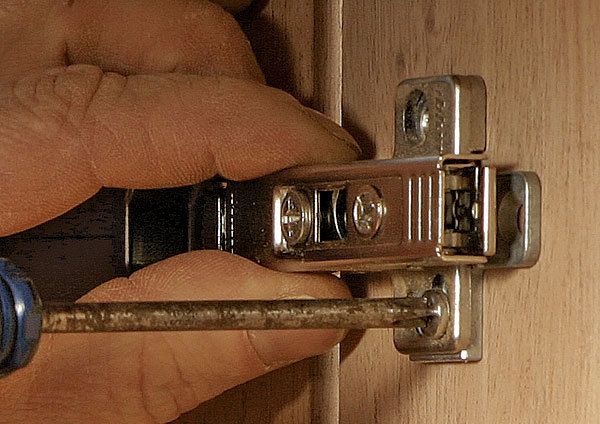Best Hinge for Built-Ins
Easy to install and adjust, cup hinges speed up cabinetmaking
Synopsis: Easy-to-install European cup hinges take all the guesswork and most of the frustration out of hanging and fitting doors on cabinetry. And although they may not be appropriate for fine furniture, they have revolutionized the built-in industry. Tony O’Malley lays out exactly what you need to know about cup hinges, from what type to buy to the details of installation.
From Fine Woodworking #207
Adding a set of built-ins is a good way to increase your home’s value. And in today’s economy, expending a bit of sweat equity is smarter than spending your savings.
Making beautiful built-ins isn’t usually as hard as making fine furniture, partly because cleverly engineered hardware for cabinet doors and drawers has sped up the process tremendously. European cup hinges make it simple to hang and fit doors of all types, from inset to overlay.
With traditional hinges, hanging a door requires careful layout and precise mortising. Achieving even gaps involves trimming with a handplane—taking a bit off one edge, then some off the others. But you only get one shot. take off too much and the gap is large and unattractive.
Cup hinges are easier to install, because the only mortise needed is drilled with a 35 mm Forstner bit. A simple turn of a screw adjusts the fit in any of three directions. There are self-closing models available and some are soft-closing, so you never have to hear a slamming door again. And after the door has been hung, you can unclip it from the cabinet in seconds for finishing, transport, or to install large items like stereo equipment, and return it just as quickly without the fit being changed.
The only downside to cup hinges is their appearance. To be sure, they would be out of place on a period reproduction or a delicate Krenovian cabinet-on-stand. But they’re great for practical cabinetry, both freestanding and built-in. I’ll explain the basic types and the features to consider.
Choosing the right hinge: Because of their popularity in kitchen cabinetry—a massive industry—cup hinges are offered in a great variety of formats and features. You can choose among various degrees of opening angles, closing mechanisms, and mounting styles. With so much variety available, there’s a cup hinge for just about every situation. I always use hinges designed for frameless cabinets, even on cabinetry with a face frame, because they’re sleeker and easier to install. I’ll show you how to install them on both types of cabinet. And I’ll focus on hinges for full-overlay and inset doors, the best choices for fine cabinetry. With that in mind, here are the three most important features to consider.
Opening angle—Standard cup hinges open between 95° and 100°. That is adequate for most situations. But there are times when you want the door to open farther. In the kitchen, a shelf on full-extension slides would require a door that opens more. So too would a cabinet meant for home theater equipment. That’s when you should use a hinge with a greater opening angle, like 165° or 170°.
Closing mechanism—Traditional hinges swing freely and require a catch or latch to hold the door closed. In contrast, most cup hinges have a spring-loaded self-closing mechanism that pulls in the door and keeps it closed.
For the full article, download the PDF below:
Fine Woodworking Recommended Products

Estwing Dead-Blow Mallet

Stanley Powerlock 16-ft. tape measure

Starrett 12-in. combination square






















Log in or create an account to post a comment.
Sign up Log in